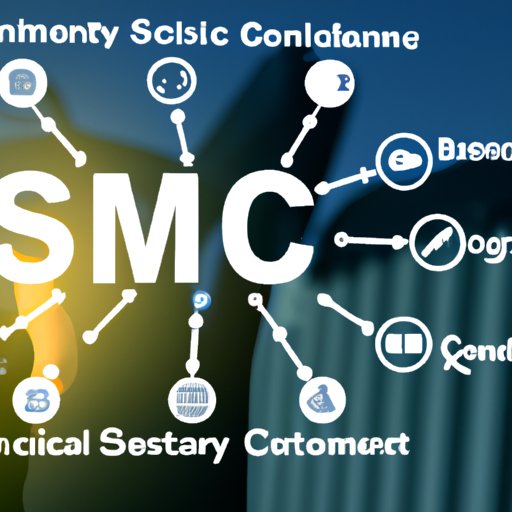Overview of Supply Chain Management System and its Benefits
Supply chain management (SCM) is a comprehensive approach to managing the flow of materials, information, and money across an organization’s supply chain. A supply chain management system (SCMS) is a set of tools and processes used to manage the activities in the supply chain. The goal of SCMS is to ensure that products are delivered to customers on time and at the right cost.
The benefits of using a supply chain management system include improved visibility, increased efficiency, lower costs, better customer service, and improved profitability. Supply chain management systems also enable organizations to become more agile and responsive to changes in the marketplace.
Exploring the Basics of a Supply Chain Management System
A supply chain management system consists of four main components: supply chain planning, supply chain execution, supply chain optimization, and supply chain analytics. Each of these components helps organizations to identify, plan, and execute the most efficient and cost-effective supply chain solutions.
Supply chain planning involves identifying the best sources for supplies, understanding customer demand, and determining the most cost-effective methods for fulfilling orders. Supply chain execution includes activities such as order fulfillment, inventory management, and transportation management. Supply chain optimization involves finding ways to reduce waste, increase efficiency, and improve customer service. Finally, supply chain analytics helps organizations to measure and analyze the performance of their supply chain operations.
Advantages of using a supply chain management system include improved visibility into the entire supply chain process, increased efficiency and productivity, reduced costs, improved customer service, and improved profitability.

How to Implement a Supply Chain Management System
Implementing a supply chain management system is not a one-time task; it requires ongoing effort and commitment. To successfully implement a supply chain management system, organizations must begin by assessing their current supply chain. This involves looking at their current processes, evaluating their strengths and weaknesses, and determining where improvements can be made.
Once the current supply chain is assessed, organizations should develop an effective supply chain strategy. This strategy should include goals and objectives, a timeline, and specific steps for implementation. Once the strategy is in place, organizations should then create a detailed implementation plan and begin implementing the supply chain system.
Analyzing the Impact of Supply Chain Management System on Business Performance
Organizations should evaluate the efficiency of their supply chain regularly to ensure that their supply chain management system is working effectively. This can be done by measuring key performance indicators such as delivery times, customer satisfaction, and cost savings. Organizations should also measure the impact of their supply chain management system on their overall business performance.
Measuring the impact of supply chain management system on business performance involves analyzing data such as sales figures, customer feedback, and operational costs. This data can be used to determine whether the supply chain system is helping or hindering business performance.

The Role of Technology in Supply Chain Management Systems
Technology plays an important role in supply chain management systems. Automation systems can be used to streamline processes, reduce errors, and improve efficiency. Digital connectivity can help organizations to communicate with suppliers and customers quickly and easily. In addition, technology can be used to track shipments, monitor inventory levels, and provide real-time updates on the status of orders.

Challenges and Solutions for Supply Chain Management Systems
While supply chain management systems offer many benefits to organizations, they can also present challenges. Common challenges include inadequate data collection and analysis, lack of flexibility, and poor communication between stakeholders. To overcome these challenges, organizations must ensure they have the right data collection and analysis tools, develop flexible strategies, and foster effective communication between all stakeholders.
Organizations should also focus on educating their staff about the importance of supply chain management and the benefits it can bring. This will help ensure that everyone in the organization understands the importance of using a supply chain management system and is committed to making it work.
In conclusion, supply chain management systems offer numerous benefits to organizations, including improved visibility, increased efficiency, lower costs, and improved customer service. However, organizations must take the time to assess their current supply chain, develop an effective supply chain strategy, and implement the necessary tools and processes to make sure their supply chain management system runs smoothly. Additionally, organizations must be aware of the potential challenges they may face when utilizing SCMS and develop strategies to address them.
(Note: Is this article not meeting your expectations? Do you have knowledge or insights to share? Unlock new opportunities and expand your reach by joining our authors team. Click Registration to join us and share your expertise with our readers.)
